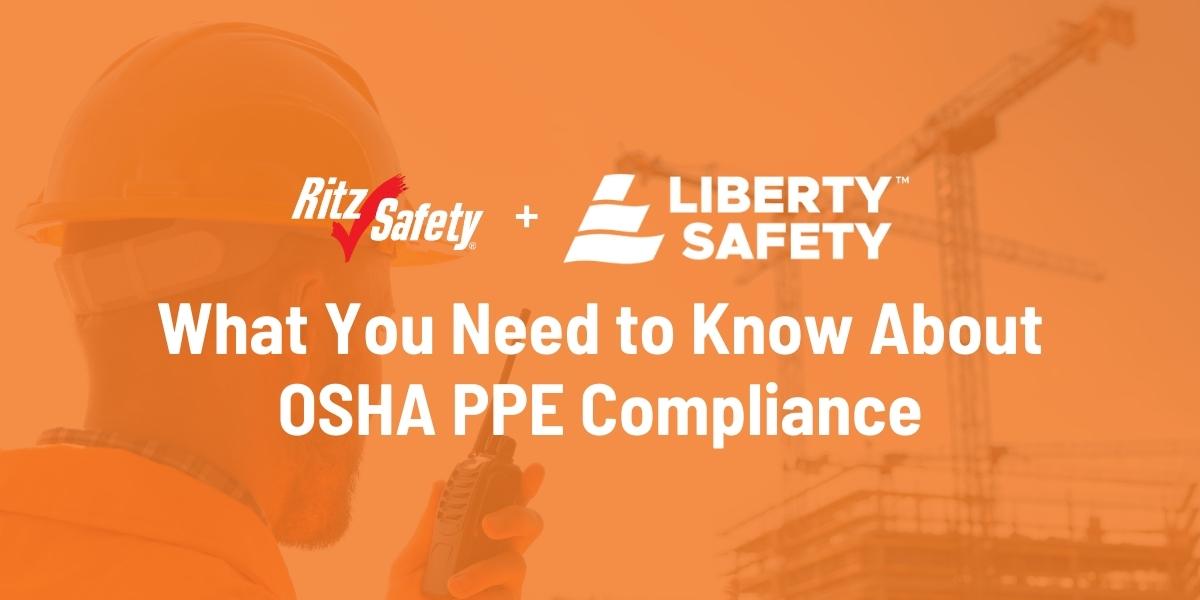
What You Need to Know About OSHA PPE Compliance
PPE compliance is one of the most important things when it comes to workplace safety. Not only is PPE one of the last lines of defense between the employee and a hazard, without proper PPE compliance, serious risks can be involved for both the employee and the employer. PPE is any equipment that is worn or held by an individual to minimize exposure to hazards that can cause serious workplace injuries or illnesses. Knowing what PPE is appropriate for the hazards you face and knowing what OSHA standards are applicable to your industry and work environment is critical in keeping yourself and others safe and avoiding penalties.
Dive Deeper into OSHA PPE Requirements and Compliance
OSHA has many different PPE regulations that depend on the specific job and environment you are working in. Your workspace is what determines what hazards you face, and the OSHA regulations you must follow reflect that to ensure you use the most appropriate PPE. With that in mind, whatever PPE you are using to keep yourself safe, ensure it is designed and constructed safely, kept clean and dependable, and fits comfortably to ensure you will be more willing to use it.
Some of the biggest issues driving OSHA and PPE compliance are:
- Worker injuries and fatalities
- OSHA fines and penalties
- Increased insurance premiums
- Legal liabilities and lawsuits
- Compliance costs
- Keeping up with regulations
OSHA has six different types of violations that they can cite, each of them with different penalties.
- Serious – A serious violation is when an employer knowingly leaves a hazard that would result in death or serious harm if it’s unresolved. For these types of violations, the employer may face fines up to $14,502 per violation.
- Other-than-Serious – An other-than-serious violation is a hazard that wouldn’t lead to serious injury or death but does compromise an employee’s safety. Employers may face fines up to $14,502 per violation, however, they can be reduced up to 95%.
- Willful or Repeated – Willful or repeated violations are those that are repeated within three years. Fines for these violations are much larger and range anywhere from $10,360 to up to $145,027 per violation. But, depending on the size of the workforce, they may be reduced. For example, you may get up to an 80% reduction for 10 or fewer employees, but there is no reduction for 251 or more employees.
- Posting Requirements – If an employer receives a citation or violation from OSHA, they must post it near the incident area until it is resolved, or for three days. Failure to do so means the employers face fines of up to $14,502 per violation.
- Failure to Abate – In this case, if a safety violation isn’t resolved by the date that OSHA specified, employers face fines up to $14,502 per day past the abatement date.
- De Minimis – De minimis violations are minor infractions that need to be fixed but don’t necessarily require a citation or incur penalties.
|
Type of Violation |
Minimum Penalty |
Maximum Penalty |
|
Serious |
$1,036 |
$14,502 |
|
Other-than-serious |
$0 |
$14,502 |
|
Willful or Repeated |
$10,360 |
$145,027 |
|
Posting Requirements |
$0 |
$14,502 |
|
Failure to Abate |
N/A |
$14,502 per day past the abatement date |
|
De Minimis |
N/A |
N/A |
The Top 10 Most Cited OSHA Violations in 2022 were:
- Fall protection
- Hazard communication
- Ladders
- Respiratory protection
- Scaffolding
- Lockout/Tagout
- Powered industrial trucks
- Fall protection – training requirements
- Personal protective and lifesaving equipment – face and eye protection
- Machine guarding
Ensuring PPE Compliance in the Workplace
While PPE is extremely important, it is oftentimes forgotten about or overlooked because of inconvenience, discomfort, or lack of training. To combat this, there are a few things you can do to ensure your PPE compliance. First, determine the hazards that are present in your workplace. Where are these hazards at? What are they? Once you’ve identified the hazards, the next step is to choose the appropriate PPE for each hazard. This PPE needs to be comfortable and convenient for the user to increase the chances of workers using it. Consider involving workers in the PPE selection process and conducting trials with different products. This allows the workers to give their opinions on the products to find the PPE that suits them best and gives them a sense of ownership where they are more likely to use the products. Once selecting the appropriate PPE, provide proper training for employees on how to use the PPE and why they should use it. If you have the correct PPE, but use it incorrectly, or don’t use it at all due to lack of knowledge, it’s ineffective. Creating a good PPE policy and enforcing it also helps to ensure the PPE is used appropriately. To discourage employees not using the PPE correctly, consider progressive discipline for repeat offenders such as verbal warnings, written reprimands, suspension, and even dismissal in extreme cases. Displaying appropriate signage in areas where PPE is needed is also helpful to remind employees. Additionally, creating a strong culture of safety is extremely important as employees are more willing to use PPE correctly and adhere to safety protocols when involved in safety programs and when safety is always top of mind.
Want help determining your PPE program? Let's talk!
For more information on OSHA PPE Compliance, visit Liberty Safety's original article here!